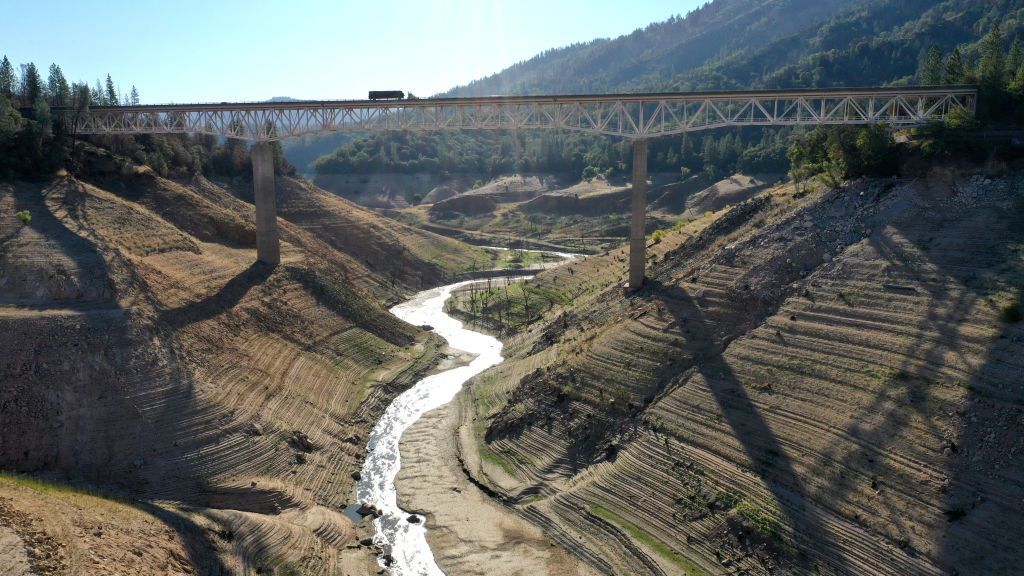OLYMPIA, Wash. — A record hot summer has laid bare a stark new reality for many states on America’s West Coast: amid rising temperatures and worsening droughts, many will need to systematically rethink the way they manage limited water supplies.
“One of the problems with rising temperatures is how it’s going to effect water management,” said Washington State’s official climatologist, Nicholas Bond. “Simply from an agricultural point of view, generally when it is warmer, the demands of crops for water goes up. At higher temperatures, crops need more to be able to thrive.”
Bond told Zenger rising temperatures were impacting year-round water supply levels by melting the state’s mountain snow pack earlier than in the past.

“There may be the same amount of precipitation [in a given year], but more of it is falling as rain rather than snow,” he said. “The water that would normally be collected uphill just melts and flows down earlier and lower. That means we don’t have as much water in that snow pack bank to get us through the dry season.”
“It’s a bad trend is because it’s virtually certain to continue.”
Record heat waves have exacerbated existing water shortages in other west coast states like California, which has suffered from worsening droughts for years. Nine Western states are now entirely in drought conditions, with much of California labeled “Extreme” or “Exceptional Drought,” according to the U.S. Drought Monitor.
The National Oceanic and Atmospheric Administration’s report for June also notes “all-time high temperature records” being broken as well as below-average precipitation — both of which present grim possibilities for the short and long term.
“We’re both getting drier and warmer, over the last few decades, Washington has been getting only about two thirds of the [summer precipitation] that it should be getting,” said Bond, adding others states had far more “disturbing” declines.
The dry and hot conditions across the West are already having far-reaching impacts on agriculture, including the lucrative salmon industry.

“Freshwater temperature has a latent effect on the productivity and survival of native fish species,” Kirt Hughes, fisheries manager of the Washington State Department of Fish and Wildlife, told Zenger. He said salmon are no fans of the rising heat.
“Hotter air means lower water levels. Lower levels mean a warmer surface temperature. Warmer surfaces means freshwater fish like sockeye and steelhead salmon need to travel further north into cooler waters to find sufficient zooplankton. Even a little change greatly effects productivity and returns,” Hughes said.
It’s a problem that has also plagued California, where a warming Klamath River has crashed that state’s normally-abundant Chinook salmon population, raising the price exponentially and endangering a profitable fishing industry.
“Juveniles have a lower survival rate in warmer water, where there’s higher instances of bacteria and viruses, and greater stresses on parents that can prevent malting,” Hughes said.
“Adult salmon aren’t able to get back to their spawning beds or their hatcheries,” said Bond.

With less water to go around, water-reliant industries that would normally have plentiful supply will in time have to compete more, according to Bond.
“You’re trying to have the best conditions for fish while also maximizing hydropower, and also maximizing allocation for irrigation districts and agriculture,” he said. “There’s tension and stakeholders with different priorities, but the same need.”
Bond cited climate change driven by carbon dioxide emissions as the primary cause.
“We really need to get serious as a world, reducing fossil fuel combustion and lower the greenhouse gas concentrations in the atmosphere. And even if we were to stop tomorrow, there’s still going to be some continued warming into the system because of what’s already there. CO2 especially has a very long lifetime in the atmosphere.”
That means many western states may be forced — no matter what — to rethink water use, a process likely to be painful and upset many existing stakeholders.
Hughes said the approach will have to include targeted laws — rather than region-wide edicts — to protect dwindling fish populations, as well as other wildlife and the broader ecosystems they create.
“From a fisheries management perspective, we take an instance-specific, site-specific approach. Blanket regulation may not provide protection,” he said.
For Bond, though, it is clear at least that water use is going to have to drop. In the end, he said, the priority should be to find pragmatic ways to facilitate that, while recognizing competing industries all have legitimate uses for water.
“If someone has senior water rights, and [alfalfa is] all they’re growing … as water demand increases, they could sell them off to a higher-value crop holder. Coping with these issues is about trying to figure out the best uses for water,” he said.
“One size doesn’t fit all.”
Edited by Alex Willemyns and Kristen Butler
The post Drought Will Force Western US To Rethink Water Use, Experts Say appeared first on Zenger News.


